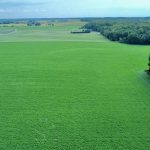Veterinarians are urging hog producers to stay calm after one herd in Alberta was found to be infected with H1N1.
They also warn farmers to make sure strict biosecurity measures are maintained.
“Normally biosecurity measures are in place, but human nature often takes over and people tend to get a bit lax from time to time,” Dr. Wayne Lees, Manitoba chief veterinary officer, said in an interview.
“This is a good opportunity for us to raise that bar again.”
Most veterinarians are telling producers to ensure they keep staff away from barns if the workers have been to Mexico, another flu hotspot, or have family members who are sick.
Read Also

Forecast leans toward cooling trend
July saw below average temperatures, August came in with near to slightly above average temperatures and September built on this warming trend with well above average temperatures for the month.
The situation in Alberta reveals that it is relatively easy for a human to infect pigs, so farmers must prevent that.
Dr. Mike Sheridan, a provincial swine specialist from Steinbach, Man., said he and his colleagues are advising clients that a seven-day gap between being in contact with a dangerous area or person should be sufficient to ensure the safety of the animals.
Most large operations already require workers to shower-in and shower-out, restrict access of non-staff and ensure trucks and other delivery vehicles are either kept away from the barns or are disinfected.
Veterinarians are also advising clients to monitor their pigs for signs of influenza. If they appear ill, check it out with a vet.
“Look at the pigs. If there’s a sudden onset of inappetite, coughing, pigs down or (lethargy), seek out help fairly quickly,” said Sheridan.
Influenza is always floating around the porcine world, so telling a commonplace strain from H1N1 requires professional help.
“We don’t know if it will bounce back to the people (who infected the animals),” said Sheridan. “Get the animals tested. If it’s a normal flu, that’s no big deal, but we would like to know what kind of virus is in the herd.”
Lees said provincial authorities also need to know if a producer’s herd is infected with H1N1.
“We’re asking vets to inform us and the lab,” said Lees.















